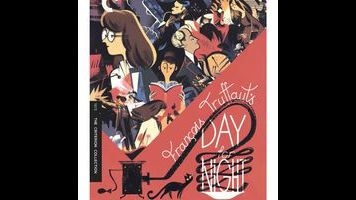François Truffaut loved movies, and he loved making movies. That’s apparent in virtually every movie he ever made, no matter the subject, so there was no particular need for him to conduct a feature-length, behind-the-scenes tour of his professional life. Nonetheless, that’s exactly what he did in Day For Night (1973), which became one of his most popular and acclaimed films—especially among other industry professionals, who presumably identified with everything they saw. In addition to winning the Best Foreign Language Oscar, Day For Night also scored Truffaut his sole nomination for Best Director.
Jean-Luc Godard, however, found the film fundamentally meretricious, and said so in a letter to Truffaut that permanently ended their long friendship. “Probably nobody will call you a liar,” Godard wrote, “but I will.” Most of his criticism was political in nature, but he also sniped at Truffaut’s failure to allude to his then-current affair with star Jacqueline Bisset: “I’d like to know why the director [played by Truffaut himself] is the only one who doesn’t fuck in Day For Night.” Truffaut’s livid reply ran 20 handwritten pages.
Godard was being a colossal prick, but he also kind of had a point. Day For Night, which is being released on DVD and Blu-ray this week as part of the Criterion collection, isn’t fraudulent, exactly, but it does pull punches. Truffaut’s intention was to celebrate his chosen career, and he keeps the tone lightly amusing even when things are ostensibly going to hell. (The death of a major character at one point is all but shrugged off—“the show must go on.”) Consequently, while the film is thoroughly enjoyable, it lacks the bite and wit of Truffaut’s best work. It’s a gooey love letter to itself, which makes it feel a tad redundant.
As ever with films about filmmaking, the film-within-the-film, entitled Meet Pamela, looks ludicrous—hardly worth all the crises its production creates. Lead actress Severine (Valentina Cortese) drinks too much and has trouble remembering her lines, or which door she’s supposed to open. One of her co-stars, Alphonse (Truffaut regular Jean-Pierre Léaud), is constantly distracted by the justifiable fear that his girlfriend (Dani), who’s working on the film as a “script girl” (this term survived longer in France than in the U.S., for some reason), might be eyeing other men. Another actress (Alexandra Stewart) shows up three months pregnant, which will necessitate hiding her condition when she shoots the remainder of her scenes in several weeks’ time. And as Godard acidly noted, everyone is sleeping with everyone else, save for the director, Ferrand, who tosses and turns alone in bed every night, suffering from anxiety dreams.
Well, sort of. It’s typical of Day For Night that this recurring dream—shown three times, but kept mysterious until the final iteration—turns out to be a memory of Ferrand as a little boy, stealing publicity photos of Citizen Kane from a local movie theater. In other words, it’s an unnecessary reminder that Ferrand (and, by extension, Truffaut, who plays the role) loves movies. Another risible scene has Ferrand open a package of books he’d ordered, allowing Truffaut to provide a roll call of his favorite directors: Hitchcock, Buñuel, Dreyer, even Godard. There’s a self-congratulatory air to the film that’s slightly off-putting, perhaps best summarized when Meet Pamela’s script supervisor (Nathalie Baye) remarks that she’d leave a man for a film, but never a film for a man. Some of the dialogue isn’t far removed from the testaments to the magic of the movies that are routinely delivered on Academy Awards telecasts.
At the same time, Day For Night frequently does succeed in conveying that magic, especially when it focuses on the nuts and bolts of a shoot rather than on the cast and crew’s mundane personal dramas. There were no making-of bonus features in 1973, and it must have been even more fascinating back then to see the solutions to various practical difficulties: fashioning a candle with a wick that contains an electric light source, or building a façade of a single room high up on some scaffolding in order to create the illusion of two buildings that face each other. (The movie’s title references another example: the now-defunct practice of using a filter to make a scene shot in daylight look vaguely like the middle of the night.) Expertly edited montages show the numerous decisions involved in every tiny aspect of shooting, including such minor but apparently crucial details as the position of an actor’s fingers at rest. If nothing else, Day For Night reveals just how much work went into Truffaut’s other films. It’s a well-deserved bow. And if, as Godard insisted, Truffaut deliberately hid the less savory aspects of filmmaking, he did so with the same very human impulse that causes parents to present their children in the best possible light.









































